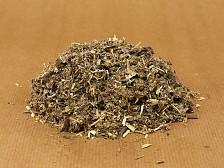
|
Cretan Sage
|
Sage has one of the longest histories of use of any culinary or medicinal herb. Harvested in the wild, Faskomilo sage is found in most Greek households. Interestingly, it is used as incense similar as White Sage (Salvia apiana) |
2 Forms |

|
Mugwort
|
Mugwort is also known as “Dreamweed” for its unique ability to stimulate dreams. It is renowned as a smudging herb for its subtle, sweet scent and dream-inducing qualities. It has a long history of use in the Pagan tradition and is still used in modern-day Pagan magical practices as incense and for smudging or spell work. |

|
Palo Santo beads
|
These natural Palo Santo beads are carved from aged heartwood and carry the wood’s signature sweet and grounding scent. Available in packs of 25, 50 or 100, they are ideal for malas, bracelets or sacred craft and are sustainably sourced from trees that have fallen naturally. |
3 Forms |

|
Rosemary
|
Rosemary is an evergreen perennial shrub, best known for its strongly aromatic, needle-like evergreen leaves. The flowers are purplish white and strongly two-lipped, and have two long-exserted (protruding) stamens. The fruit consists of four dry nutlets (one-seeded sections). |

|
Sahumerios Bath & Smudge blend
|
Sahumerios is the name given to a mixture of fragrant woods, flowers and herbs, to be used as a ceremonial incense or herbal bath. It consists of mainly Palo Santo (Bursera graveolens), with addition of a multitude of other aromatic and ingredients. |
2 Forms |

|
Sweetgrass
|
The genus Hierochloe has a long association with holy ceremonies. The name comes from the Greek "Hieros", meaning sacred, and "Chloë", meaning grass or holy-grass. In Northern Europe it was placed in front of churches on Saints’ days. Throughout North America, First Peoples appreciated Sweetgrass for the scent. |